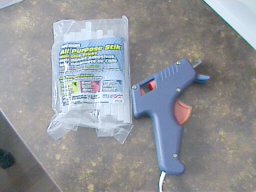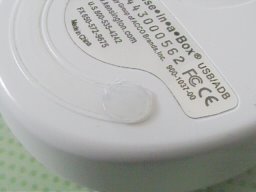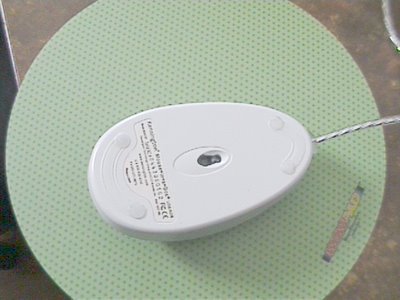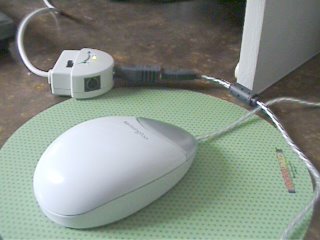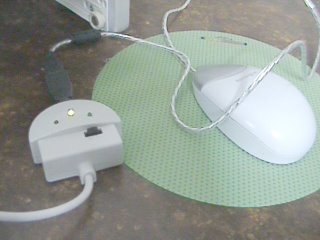If you're using any stock 61xx series Macintosh in this day and age, you're either a Linux user, or just crazy..... or more of a hard-core loyalist than me!!! (eek!)In any case, chugging along at 60 MHz, 8 or 16 MB of RAM (depending on where you bought it and when you bought it), and a miniscule 350-500 MB Hard Disk Drive, just isn't a way to go these days.
But before upgrading, you might stop and ask yourself: "But dude... isn't it just better to get an all new Macintosh system, complete with up-to-date software?" My best answer would be: "it depends". It really depends on what your needs are, how much you're willing to invest, and what kind of software you have on it already.
If you just plan on creating graphics and playing with Photoshop 3.x-6.x and light web browsing, upgrading the 6100 would be a good idea. Otherwise, if you're a real hardcore media freak, or need to access all the new USB or FireWire peripherals out there, the choice is clear... BUY A NEW COMPUTER (Mac or PC).
But let's say for the sake of argument that you want to upgrade your 6100. What would you get?
MEMORYThe first area that would be the easiest to upgrade and would provide the most noticeable performance increase would be the RAM. Typically, you would need to consider what kinds of programs you're running and the Mac OS version you'll be using when determining how much you need. But since this this machine is pretty much obsolete, i'd say to just -MAX IT OUT-. Buy as much RAM as you can afford. All of your old programs would behave more stable than they would if they had to fight over their share of such a precious resource. The old "maximum" amount of RAM that Apple suggests is 72 MB. Back then, the largest SiMM memory modules only came in sizes of 32 MB per module. But that was litterally last century. There are currently SiMM memory modules that come in sizes of 64, 128, and 256 MB per module.
Although there is mention on Kan's website (
www.kan.org/6100) about a guy who was able to have about 512-520 MB, I recommend against this for a number of reasons:
1) It's too damned expensive to pay for an obsolete piece of technology. You can get FAR more memory for a new computer at the price it would cost you to get a SiMM upgrade for this computer.2) Most Mac programs designed for Mac OS 7.x-9.x and "pre-G3" Macintoshes don't usually need more than an average 8-32 MB.3) Heat issues. I did some research on Google.com and found that there were consistent reports of heat-related problems concerning the use of individual 256 MB memory modules in the 6100.So, a sensible -TOTAL- amount of RAM to have would be in the 72-264 MB range. I called Edge (
http://www.edgetechcorp.com/), a well-known manufacturer of memory upgrades for both Macs and PCs and asked about the 256 MB kit that they sell. The guy told me that it is actually a set of TWO 128 MB modules that will upgrade the 6100 to a total of 264 MB (there is a total of 8MB soldered on the motherboard).
Hard DriveYou should also use a similar approach when deciding how big of a Hard Disk Drive (HDD) to get. I personally have an internal 4.5 GB SCSI drive in my 6100. Although you can purchase a higher-capacity and faster SCSI drive from certain websites, I recommend against it for the following reasons.
1) Too expensive for old technology. You can get a VASTLY larger HDD for a more recent computer system for the same price.2) Even if SCSI HDDs are significantly faster than the typical IDE or ATA drives currently in most modern computers, the 6100 limits the speed of any SCSI device to it's maximum bandwidth of a puny 5 MB/s.3) Most Mac programs designed for Mac OS 7.5 to 9.1 usually don't need more than 500-700 MB of -FREE- Hard Disk space.ProcessorThis is an easy one. If you plan on using Mac OS exclusively as your Operating System, go to Sonnet Technologies and get yourself a $200
Sonnet Crescendo G3 NuBUS upgrade card. It'll take you to either 480 MHz or 500 MHz, depending on wether you have a stock 60 MHz PM6100 or a 66 MHz PM6100 respectively.
However, due to Sonnet's incompatibility with Linux, you would have to go to auction sites like eBay to find a G3 upgrade card made instead by NewerTech, which has since been discontinued. Only the NewerTech G3 cards manage to somehow work with the Linux distros.
Mac OSIf you only plan on doing light media authoring work, I recommend downloading Mac OS 7.5.x from Apple's website for -FREE- and then updating that to 7.5.1, 7.5.3, and then 7.5.5 subsequently in that order.
Otherwise, if you can get your hands on Mac OS 8.5.1 or 8.6 or 9.1, get those instead. Not only do they better support modern web browsers like iCab, they provide a much more streamlined and intuitive interface than 7.5.x.
Miscellaneous Upgrades1) ADB/USB "Optial Mouse*in*a*Box" by Kensington.
2) "ADB Port Expander Switch Box" available at WeLoveMacs.com
3)
"MAC-VGA Adapter" (Part # F3H1381) by Belkin. If your old monitor is dying out, your only choice for replacement monitors would be in the realm of VGA CRTs. And since the stock 6100 lacks the kinds of connectors to use a VGA display, you would absolutely need this.
4) Any "AAUI Ethernet Transceiver". If you ever plan to connect your PM6100 to a DSL or Cable modem or even to a router, you'll need this in order to be able to connect a standard CAT-5 Ethernet cable to your 6100. A VERY good selection of these transceivers can be found at
WeLoveMacs.com.
5) "A/V" or "HVP" video card. If you need more viewing space on your desktop or just simply want more visible colors on your images when you're working in Photoshop, you'd probably want to look around on eBay or some Macintosh used parts websites to find this component. Keep in mind that you'd also need both a sort of A/V card mounting bracket and a PDS adaptor card with a PDS pass-through interface. I'd personally recommend against this upgrade if your 6100 currently has problems keeping cool.
Tips:As mentioned on the
LowerEndMac.com website, cleaning the dust out of a Power Supply Unit (PSU) should get a seemingly "dead" one back into operation. Although that same website also mentions replacing the internal PSU fan with a 25 cm fan, that's actually harder to do and is potentially dangerous to both you and the PSU. Instead, I would rather choose to clean out the dust.
Keep in mind that I take NO responsibility on what happens to you or your computer if you choose to follow this proceedure below. Proceed at your own risk.
Here's what I do to clean the PSU's internal fan:
1) Make sure the PSU is disconnected from the power cord and the power cord is disconnected from the electric power outlet. Remove the PSU from the 6100 (follow the instructions that are available in the Power Macintosh 6100 Service Manual available on
AppleRepairManuals.com).
2) Place the PSU on a smooth, clean, flat surface (prefferably a wooden table or countertop). Using a narrow vaccuum cleaner hose, clean out the tiny holes and crevaces of the PSU as best as possible.
3) With some cotton swabs, gently clean the internal fan by wiping away the excess dust.
4) Gently blow into the PSU, turn it upside down, and lightly shake it left and right and then up and down to remove the chunks of dust. Vaccuum any that wind up on the outter grill of the PSU.
5) Using a long and narrow wooden toothpick, gently clean the internal wire mesh grill just behind the blades of the fan by lightly poking through the tiny holes where air is supposed to flow through. Repeat step 4 as many times as needed to remove any loose particles.
While this seems COMPLETELY un-professional, this method actually works and the PSU in my 6100 has been working 3 years since i've done this proceedure.
